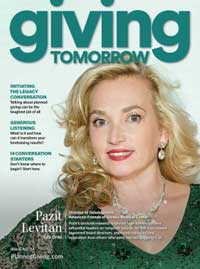Are we Tribalistic in Nature?
Tribalism is at the core of human nature. Whether in politics, religion, race, economics, or even the nonprofit sector, we naturally gravitate toward groups that align with our values, beliefs, and worldviews. This instinct to connect—and divide—has shaped civilizations for millennia.
But in an era where information is abundant, and technology connects us instantly, why does tribalism still dominate? More importantly, how does this impact fundraising and major gifts development? Understanding tribal instincts is crucial for building trust with donors, fostering long-term relationships, and ultimately securing transformative gifts.
The Evolution of Tribalism: From Survival to Strategy
Throughout history, tribalism served an essential role in human survival. Early humans formed tribes for protection, food, and shelter. As societies evolved, so did the reasons for group affiliation. Today, tribalism is deeply embedded in our identities, influencing how we perceive trust, credibility, and loyalty.
Maslow’s Hierarchy of Needs suggests that once basic survival needs are met, people seek love, belonging, and self-actualization. Yet, even at the highest levels of personal fulfillment, tribal instincts persist. In fundraising, this means donors are not simply looking for causes to support—they are seeking communities that reflect their values and aspirations.
The Fear Factor: Who Can We Trust?
Despite living in the most technologically advanced era in history, society remains deeply polarized. Questions like “Who can we trust?”, “What is credible?”, and “Who shares our belief system?” dominate public discourse. These same questions shape donor behavior.
Consider high-net-worth donors and major gift prospects. They don’t just give money—they invest in causes that align with their identity. They seek trusted organizations where their contributions will have lasting impact. And like all humans, they make decisions based on emotion first, rationalizing them with logic later.
This is why nonprofits must craft narratives that resonate deeply with their donor “tribes.” If your organization fails to establish trust, credibility, and alignment with donor values, you’ll struggle to secure transformational gifts.
The Power of Group Identity in Philanthropy
One of the strongest drivers of philanthropy is group identity—the sense that we belong to something greater than ourselves. Whether it’s alumni giving, religious giving, or philanthropy tied to cultural identity, donors are motivated by their connection to a larger group.
Nonprofits can harness this by fostering collective giving opportunities such as donor networks, advisory councils, and giving circles. When donors see their peers giving, they are more likely to contribute. This is why campaigns that highlight donor participation—such as matching gifts or leadership giving programs—are so effective.
Peer influence plays a major role in philanthropy. If a major donor publicly supports a campaign, others within their network are more likely to follow suit. This reinforces tribal identity and deepens loyalty to an organization.
Tribalism and Fundraising: Why It Matters
Fundraising professionals must recognize that donors are not just numbers—they are members of a community. The most successful fundraisers understand that donor engagement is not just about data and outreach; it’s about building relationships rooted in shared values.
Here’s how tribalism plays a direct role in fundraising:
- Donors align with organizations that reinforce their values – A planned giving donor passionate about education is more likely to support scholarships and endowments rather than general operating funds.
- Loyalty is built through inclusion and shared purpose – Donors need to feel like they belong to something bigger. Creating donor societies and legacy circles reinforces that sense of belonging.
- Storytelling is key – Fundraising messages must align with the donor’s worldview. Emotional narratives help solidify tribal connections.
Dr. Russell James on Tribalism in Fundraising
Dr. Russell James, a leading expert in fundraising psychology, emphasizes the role of “subjective similarity” and “reciprocal alliances” in donor behavior. His research shows that donors are more likely to give when they feel personally connected to an organization, reinforcing the idea that fundraising success depends on building relationships within donor “tribes.”
He explores these themes in Inside the Mind of the Bequest Donor, where he examines how storytelling and emotional connection influence planned giving decisions. For fundraisers looking to deepen their understanding of donor psychology, Dr. James provides valuable free resources at EncourageGenerosity.com.
Tribalism in Planned Giving
Planned giving donors, more than any other group, think long-term. They’re not just writing checks; they’re making legacy decisions that align with their deepest values.
For these donors, trust is everything. If a donor is going to leave a nonprofit in their estate plans, they must feel completely aligned with that organization’s mission. This is why storytelling and donor stewardship in planned giving must go beyond transactional fundraising. It must focus on legacy, values, and belonging.
A great tool to facilitate this process is LegacyPlanner. It helps donors structure their legacy gifts in a way that reflects their personal and philanthropic goals. Providing tools like this not only enhances donor confidence but also reinforces tribal connections by making the donor feel understood and valued.
How to Leverage Tribalism in Major Gifts
Major gifts fundraising is not about making a one-time ask. It’s about cultivating donors over time and making them feel like insiders. If a donor feels like they are an integral part of your mission, they are more likely to make a significant commitment.
Here are three key strategies to harness tribal instincts in major gifts fundraising:
- Create a Sense of Exclusivity – Major donors want to be part of an elite group. Invite them to VIP events, provide behind-the-scenes access, and offer unique engagement opportunities.
- Tell Stories That Reinforce Belonging – Highlight other major donors, share testimonials, and create narratives that align with your donor’s identity.
- Offer Strategic Planned Giving Options – Many major donors are also planned giving prospects. They want to ensure their legacy aligns with their values. Tools like LegacyPlanner and comprehensive estate planning resources can help bridge this gap.
Understanding Donor Tribes to Build Long-Term Support
The most successful fundraisers recognize that donors don’t just give—they invest in communities that reflect their identity and aspirations. Whether you’re cultivating major gifts, planned giving commitments, or annual donors, understanding donor psychology is the key to long-term fundraising success.
If you want to master donor engagement, build deeper relationships, and secure transformational gifts, now is the time to invest in professional development.
Take the next step:
- Enroll in the Major Gifts Boot Camp to refine your skills in securing high-impact gifts.
- Join the Planned Giving Boot Camp for Major Gifts Officers to integrate planned giving into your fundraising strategy seamlessly.
The nonprofit world is evolving, but human nature remains unchanged. Donors still seek belonging, trust, and shared purpose. The fundraisers who understand and harness these instincts will be the ones who thrive.






